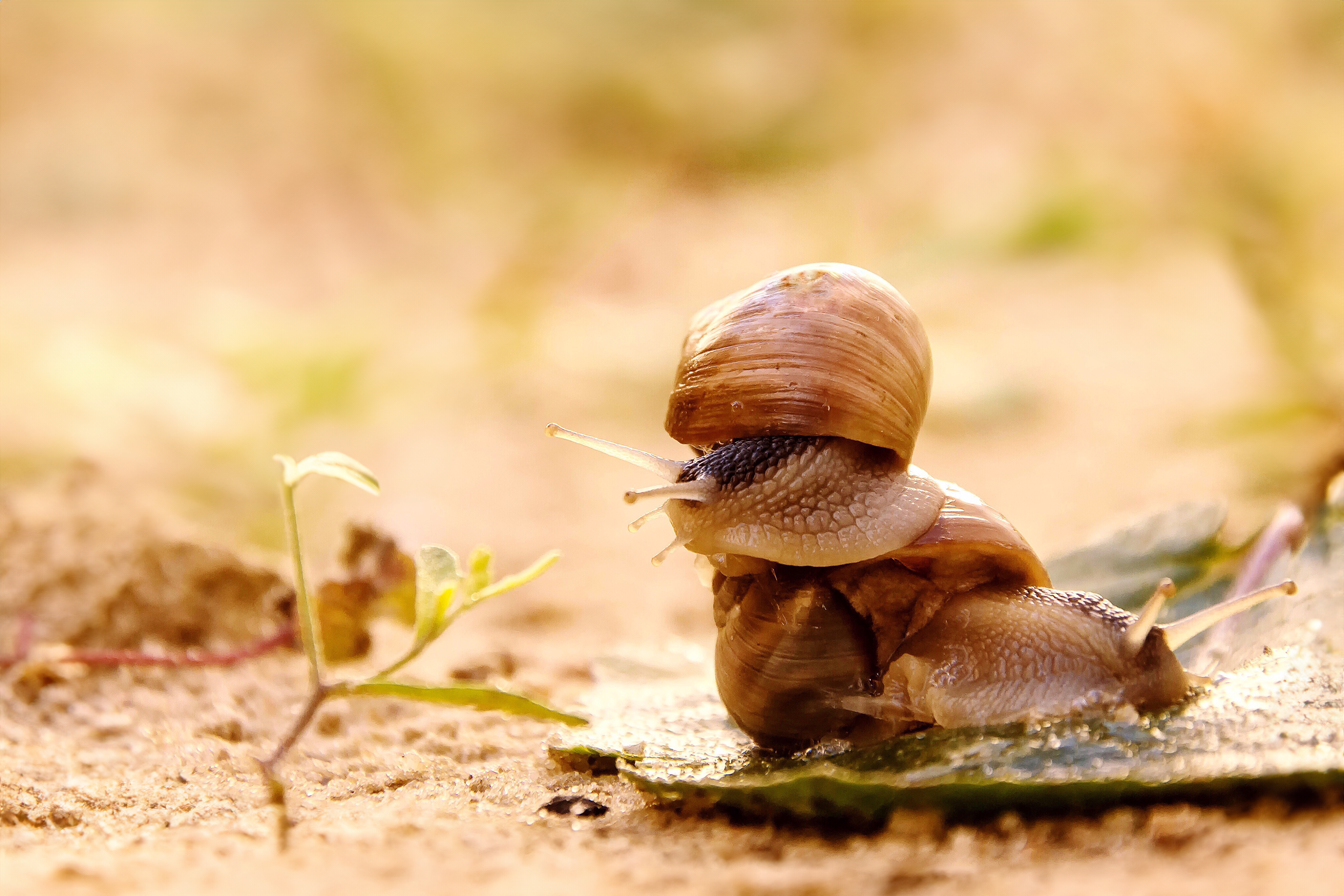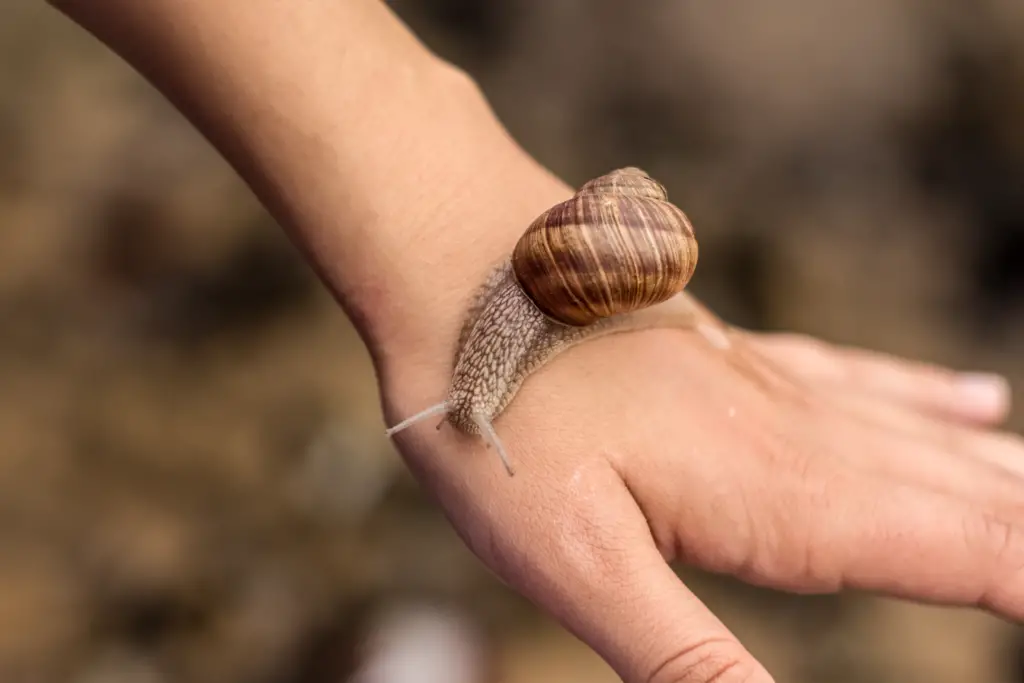
Snails, with their slow pace and unique spiral shells, captivate your curiosity. You might wonder if these delicate creatures can feel pain, considering their surprisingly complex behaviors and responses to their environments. While snails lack a complex nervous system like vertebrates, they do possess nociceptors, which enable them to detect harmful stimuli. This has led researchers and animal enthusiasts alike to ponder over snails’ sensory perception and whether it’s akin to the pain that humans and other animals experience.
Understanding snail physiology offers clues to their pain perception. Snails have ganglia that function similarly to a rudimentary brain. This allows them to process environmental information and react to potential dangers. For instance, if a snail encounters salt or experiences shell damage, it exhibits physical reactions that suggest discomfort. The way snails behaviorally respond to adverse conditions raises questions about their ability to experience pain, urging a more considerate approach to how they are handled.
Your interaction with snails, whether in a garden or as a pet owner, comes with a responsibility to be mindful of their well-being. As studies on pain in invertebrates evolve, so does our understanding of what snails may feel. It’s important to recognize that snails, and invertebrates as a whole, are a part of our shared ecosystem that warrant respectful treatment and care.
Anatomy and Nervous System of Snails
Your understanding of a snail’s ability to feel starts by exploring its anatomy and nervous system. These aspects are fundamental to how snails interact with their environment.
Neural Structures
Snails possess a relatively simple nervous system compared to vertebrates. They do not have a central nervous system like you find in humans; instead, their nerve cells are more diffused and decentralized. There are several ganglia—clusters of nerve cells—that act as control hubs, distributed throughout the body. These ganglia are connected by nerve cords, which facilitate basic sensory and motor functions.
Sensory Organs
Equipped with a range of sensory receptors, snails can detect changes in their environment. They have tentacles on their heads, which serve as primary sensory organs. The longer tentacles usually contain eyes at the tips, providing vision. Meanwhile, the shorter pair work to sense chemicals, touch, and vibrations. Snails also have tactile receptors on their soft bodies, enabling them to sense their surroundings as they glide across surfaces.
Pain Perception in Snails
Exploring whether snails experience pain requires looking at both their behavioral responses to potential harm and the physiological evidence that might indicate pain perception.
Behavioral Responses
When you observe snails, you might notice how they retract into their shells when they come in contact with harmful substances or are touched unexpectedly. This response could be interpreted as a protective reflex, similar to how you might instinctively pull back your hand when feeling heat. Reactions to environmental changes, such as avoiding harmful substances or conditions, hint at a basic level of sensory perception.
Physiological Evidence
Snails possess a simpler nervous system compared to humans, and it has been noted that they have a unique set of anatomical and physiological features that should be considered. While they lack a central nervous system like humans, research indicates they have nociceptors – receptors sensitive to potential harm – which suggests they might have the ability to perceive pain. Yet, the exact nature of what they experience remains a subject of scientific debate.
Research on Snail Pain Response
When discussing whether snails can feel pain, experimental studies and ethical considerations are pivotal. These aspects provide insights into the complexities of snail sentience.
Experimental Studies
Researchers have employed various experimental methods to assess pain in snails. For instance, studies have looked at snails’ behavioral changes in response to harmful stimuli, such as exposure to noxious chemicals or abrasions. In particular, some scientists argue that the presence of nociceptors—neurons that respond to pain—indicates that snails may have the capacity for pain perception. These nociceptors trigger defensive reactions in snails, such as retraction into their shells or secretion of mucus. It’s important to understand that while these reactions suggest a form of sensitivity, they may not conclusively prove the subjective experience of pain as understood in humans.
Ethical Considerations
The possibility that snails might feel pain introduces significant ethical implications for their treatment in research and agriculture. As you learn about the scientific findings, consider the moral responsibilities that may arise. Ethical debates often focus on the minimization of potential suffering for all sentient beings, which could extend to the handling of snails in various settings. Your awareness of these concerns is crucial as the scientific community continues to examine the extent of sentience in creatures like snails.
Frequently Asked Questions
In this section, we address some common queries about the sensory experiences of snails, particularly related to pain and discomfort.
Do snails experience discomfort when boiled?
When snails are boiled, they may exhibit a reaction due to the sudden change in temperature, indicating a form of discomfort. However, snails’ pain perception is not fully understood.
Is there a response from snails when they are stepped on?
A snail’s body may contract if stepped on, a response which serves as a basic defense mechanism. This reaction might suggest discomfort or a primitive form of pain sensation.
What is the reaction of snails when their shells are damaged?
Damage to a snail’s shell often results in a withdrawal reflex, as the shell is crucial for the snail’s survival. This could imply a form of negative sensory experience.
Do snails exhibit any signs of distress when exposed to salt?
Exposure to salt can lead to dehydration in snails, causing them to produce mucus in an attempt to protect themselves. This indicative behavior could be perceived as a sign of distress.
Can snails suffer when they are at the end of their life span?
As snails reach the end of their life span, they may slow down and become less active, but interpreting this as suffering is challenging due to the limited understanding of snails’ emotions and perceptions.
Is there evidence of snails showing emotional reactions?
While snails do respond to external stimuli, there is insufficient evidence to conclusively say that they show emotional reactions similar to those of higher animals. They do have some behavioral responses to adverse conditions, but these are under ongoing scientific examination.
Driven by a passion for those tiny creatures that rule our world, we at Bug Domain strive to be your go-to resource for information on insects.




